Ecco the Dolphin's Spooky Moments
Posted on Oct 19, 2015
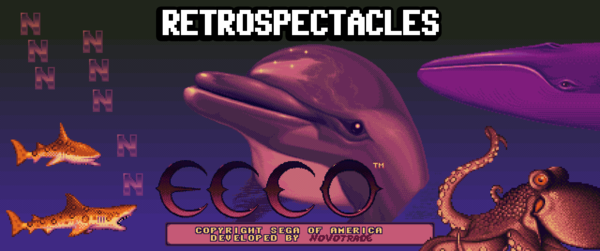
Ecco the Dolphin is an action-adventure game developed by Novotrade International and published by Sega in 1992. Starring the titular Ecco, a bottlenosed dolphin with a strange constellation-shaped birthmark on his forehead, the game was unique at the time for exploring the vast depths of the ocean.
“It’s dolphins, right?” was the common refrain of most parents purchasing Ecco games for their children. Nothing could be bad about some nice, adorable, friendly dolphins! Even discarding the fact that real life dolphins are brutal and carnivorous, it was still a flawed premise from the start to assume that every animal protagonist would be as friendly as Sonic the Hedgehog… which was still a game with its own problems, but that’s for another article.
Needless to say, this didn’t pan out well for the children who received these gracious gifts. Just like Ecco himself, we’ll learn to experience true fear after the jump.
The game starts you off in Home Bay, the peaceful and seemingly idyllic home of Ecco and his pod. Most of your dolphin friends have nothing interesting to say, including the one challenging you to a pissing contest to see how far you can leap out of the water.
Still, there isn’t anything to do at this point in the game, so it doesn’t hurt to get familiar with the control scheme. As you crest the top of the sky, a tornadic waterspout strikes the water, sucking up all of your friends in the ocean - and a good chunk of the pre-existing sea life, too. By a stroke of pure luck, Ecco is left as the only survivor, all because he just had to prove he could jump higher than his friends.
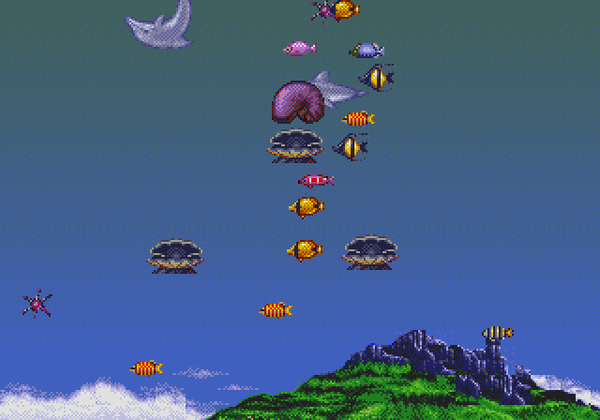
It seems a bit cruel to leave Ecco responsible for the annihilation of almost all ocean life, doesn’t it? The premise embodies the strange moral paradox present in most video games of its time: you can stop the entire events of the series from happening by just choosing to stay in the water. The opening cutscene is the most memorable part of the game, but maybe it wouldn’t have felt so guilting (and compelling) if it just happened after a timer instead of on your motions.
The game runs with the undercurrents of an antithetic problem: the vast expanses of the ocean are never-ending, and yet excessively claustrophobic. There’s something cramped about the feeling of swimming through miles and miles of empty water, with nothing but the occasional misshapen coral to remind you that you’re not just running in place. On top of that, many levels rely on you figuring out how to navigate treacherous mazes while still finding the time to double back. Being a dolphin, Ecco must keep revisiting pockets of air so that he does not drown. Having a built-in time limit on your own character is fun and not at all nerve-wracking, if you’re a sadist.
Speaking of drowning, one particularly cruel manifestation of the game’s difficulty is the realistic dolphin physics: Ecco swims more clumsily than the average video game protagonist runs. You’ll never catch him leaping over a building, and when you do try to jump, it’s common that he will just flail around wildly on the ground. The game has a more realistic bent than its mascot-based peers, so it’s understandable, but still mildly disturbing. On top of that, Ecco himself emits ear-splitting screams whenever he’s hurt.
And, yes, when you invariably find yourself lodged into a piece of geometry or cornered by sharks, Ecco will spasm and scream as he slowly drowns to death. For kids!
The difficulty exists pretty much entirely because of once-prevalent game rental stores. At the time, this was a huge concern for designers of games for home consoles. A store that can give you a full game for nearly-free is a threat to marketing: it was trivial for a child to rent their favorite game, beat it over the weekend, and never buy it. Maybe, in this case, having a password system instead of the soon-to-be conventional save system wasn’t the best idea (it gave kids an opportunity to skip straight to the harder levels of the game), but one way or another we were left with a twice-as-hard Ecco.
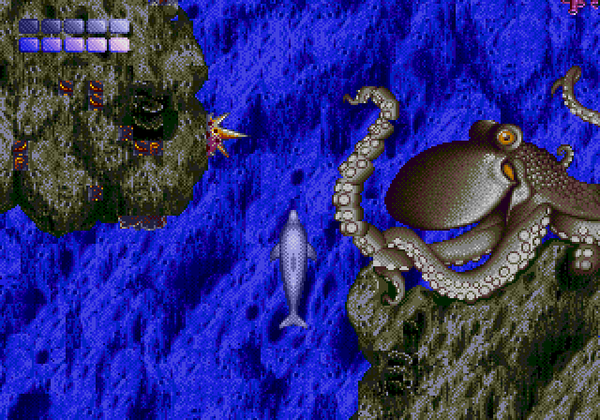
One of the more infamous parts of the game occurs in the Undercaves, which is merely two levels in. As a matter of fact, it’s up there with the barrels from Sonic the Hedgehog 3 in terms of newbie traps. Though the game does give you a hint - “Swim slowly past eight arms” - it was lost on many younger players who either did not make the connection or could not read English. As you make your way into the caves, you’ll find an enormous octopus (much larger than Ecco) guarding a passageway. True to the hint, if you swim too fast, the octopus will smack you to death.

The Arctic section of the game takes place in the underwater equivalent of a frozen wasteland. A good portion of it is spent performing difficult platforming-esque feats, leaping in and out of the water while trying to avoid being crushed by ice blocks. There’s also giant crabs to worry about, for some reason - they’re buried in walls, invisible until you approach them, and then they will speed towards you across the level until you defeat them.
As the game progresses, the ocean life takes a back seat to the real star of the show: the science fiction elements. Halfway through the plot, you meet the Asterite, a cluster of spheres in the shape of a double helix.
On the request of the Asterite, Ecco travels to the lost city of Atlantis, where he finds an abandoned library that informs him of his planet’s grave fate. Vortex, a planet of so-far-unseen aliens, has been stripping the Earth’s oceans of most of its lifeforms at a rate of every 500 years. After a brief fetch quest involving bringing the Asterite one of its globes, Ecco gains the death sonar, replacing his normal sonar with a brown note scream that somehow kills enemies upon contact. Now armed and dangerous, Ecco travels to the depths of Atlantis and uses their ancient time machine (yes) to travel back to when his pod was abducted.
That’s a bit much to take in at once just from a few paragraphs of text, but it feels just as confusing to be playing it. It’s very solidly written, but hard to do justice, as all of this is communicated in sparse, dismal-looking messages scattered across the Ecco world. Finding out what’s actually going on is a gameplay element in itself.
Back to the time of the crisis, Ecco makes the choice to let himself get abducted by the Vortex alongside his podmates this time instead of dropping back into the abandoned waters.
The Tube is the first level of the last chunk of the game, and it’s an unpleasant autoscrolling level. Electrical fixtures try to electrocute you, blocks try to crush you, and the odd jellyfish is there just to distract you. All that said, it’s short and easy compared to what’s coming up next.
Once you reach the Machine, things get truly horrifying.

Welcome to the Machine is the second-to-last level in the game, and it’s perhaps the most memorably terrifying aspect of Ecco. It’s the first time you get to see the Vortex themselves, or at least their drones: they’re horrifying H.R. Giger-esque arthropods, a massive shift in tone from the game’s usual enemies (well, okay, maybe not that big of a difference if you feel the same way about crabs).
The level itself is unpleasant. It’s another autoscrolling level, set to eerie music. You progress by trying to follow the movement of the camera, which is more than difficult as it changes every few seconds with no real rhyme or reason. There’s no guessing on your first try, only committing it to muscle memory. The Vortex drones will swarm you, and they can clip through walls. They take several hits with the sonar to kill, and when you hit them the first time, their bodies explode violently but their heads remain - they will float around and haunt you still, and their bodies will eventually regenerate. Unsightly, trypophobic holes spit out unidentifiable green globs at you that will hurt you on contact. Your best bet at times is to spin around wildly, firing your sonar everywhere.
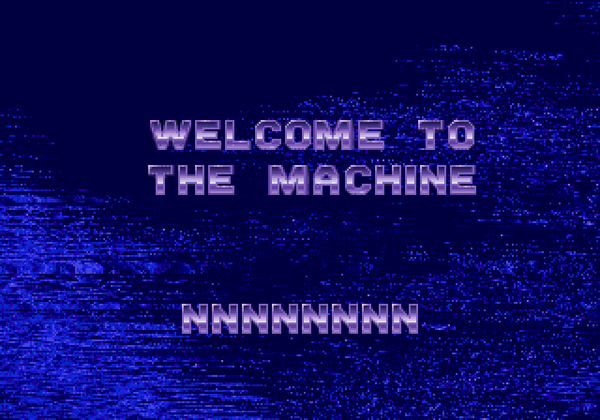
This is all compounded by the fact that it was sickeningly easy to access for beginner players, as the password for it was simply “NNNNNNNN”. A good percentage of young players discovered this the hard way while trying to exit the level selection. This was hopefully a coincidence at best, since it was part of a series of similar passwords that used combinations of As and Ns (a similar example being “NNAANNAA” to go to the level Dark Water), but why? It’s understandable that a kid would be afraid of this game, when it’s trivial to boot it up and then immediately spoil the endgame for yourself - Ecco, stranded and alone, being crushed to death slowly by the advancing walls as strange buglike creatures swarm him.
If you manage to make it all the way through, you’ll finally get to confront the infamous Final Fight.
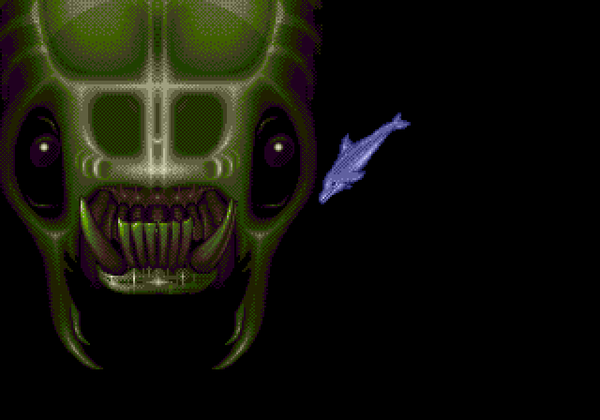
This is your chance to face off with the Vortex Queen, the heart of all of the evil in the game. She’s a giant disembodied head - and we mean giant, because she doesn’t even fit on the screen.
Her primary attack is inhaling food into her maw, including little Ecco, and it takes nimble hands on the controller to dodge these attacks. The fight gets very, very gross: you’re expected to shoot her eyes out of their sockets (by screaming at them) one at a time, then ram her jaw off of her head three times until it stops regenerating, at which point she won’t be able to use her sucking attack. Because, you know, missing half of your face makes things pretty hard.
The last stage of the fight is pathetic in comparison: all you have to do is throw yourself into her skull over and over until she vomits out all of the sea life she consumed and then sinks off the bottom of the screen, never to be seen again (maybe). Your friends, released from the clutches of the queen, are free to romp with you out of the tubes and back into the ocean for a very nice cutscene.
On the other hand, if she inhales you, you get sent back into the Machine - where you have to endure the same, excruciatingly painful, frustratingly slow six minutes of forced gameplay, all over again.
As for the unlucky player that gets the idea to enable invincibility on this fight to make it easier… Ecco will still get swallowed by the Queen, and what’s worse, it won’t kick you out to the Machine. It’ll leave you there with the game frozen in time, forcing you to turn off the console, leaving Ecco and his friends to digest. Sweet dreams.
After the fact...
Ecco the Dolphin was so notoriously traumatizing, in fact, that it generated a series of topics called “Am I the only one who used to get scared by this game?” on GameFAQs (a once-popular message board website) as early as 2004. That’s a pretty big deal for a game that would have been twelve years old at the time.
Of course, Ecco the Dolphin is only the first game in a trilogy of horror. We’ve only just dipped under the surface of how scary the entire Ecco series is. Just wait until we discover the horrors of the Medusa, or the Heart of the Foe - but that, of course, is for a different time.
Categories: gaming retro horror
Tagged: 1992 action-adventure creepy gaming ecco the dolphin sega sega genesis